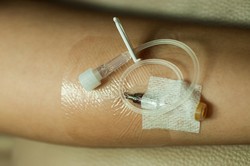Innovative catheters attack microbes
Catheter-associated urinary tract infection (CAUTI) is the commonest nosocomial infection that is tightly linked with the use of an indwelling urethral catheter. Patients receive prophylactic antibiotics to prevent the development of CAUTI, but the emergence of microbial resistance poses a major challenge to the prevention or treatment of CAUTI. For decades, the fragile antibacterial coatings have failed to prevent pathogenic bacteria from spreading and forming biofilms. The EU-funded BACATTACK(opens in new window) (A stealth attack tool for preventing clinical drug resistance through a unique self-regenerating surface) project proposed to address this growing issue through the development of novel devices made of an innovative, patented carbon dioxide technology. This technology essentially generates a self-sustainable antimicrobial surface with a stealth attack mechanism. This is achieved through the release of biodegradable antimicrobial peptides (AMPs) stored within a hydrogel network and released in a controlled fashion. A noble metal alloy coating serves as a first line of defence preventing bacteria from colonising the surface. Using this technology, partners produced full-scale prototype catheters and loaded them with different active pharmaceutical ingredients (APIs) alongside an effective antimicrobial metal alloy coating. All candidates proved to be biocompatible in vitro thereby passing the requirements for future development of the product. Researchers identified three different AMPs for this application and promising results were obtained with the polymer materials tested. In the future, these could be exploited towards the generation of antimicrobial devices capable of preventing infections and counteracting bacterial resistance. Furthermore, a combination of broad spectrum AMPs could be used to treat various bacteria and fungi. Overall, the BACATTACK proprietary technology has the potential to revolutionise medical devices, as there are no similar products or technologies available. From a clinical standpoint, anti-bacterial catheters will reduce the onset of CAUTIs and related nosocomial complications thereby improving quality of life.







